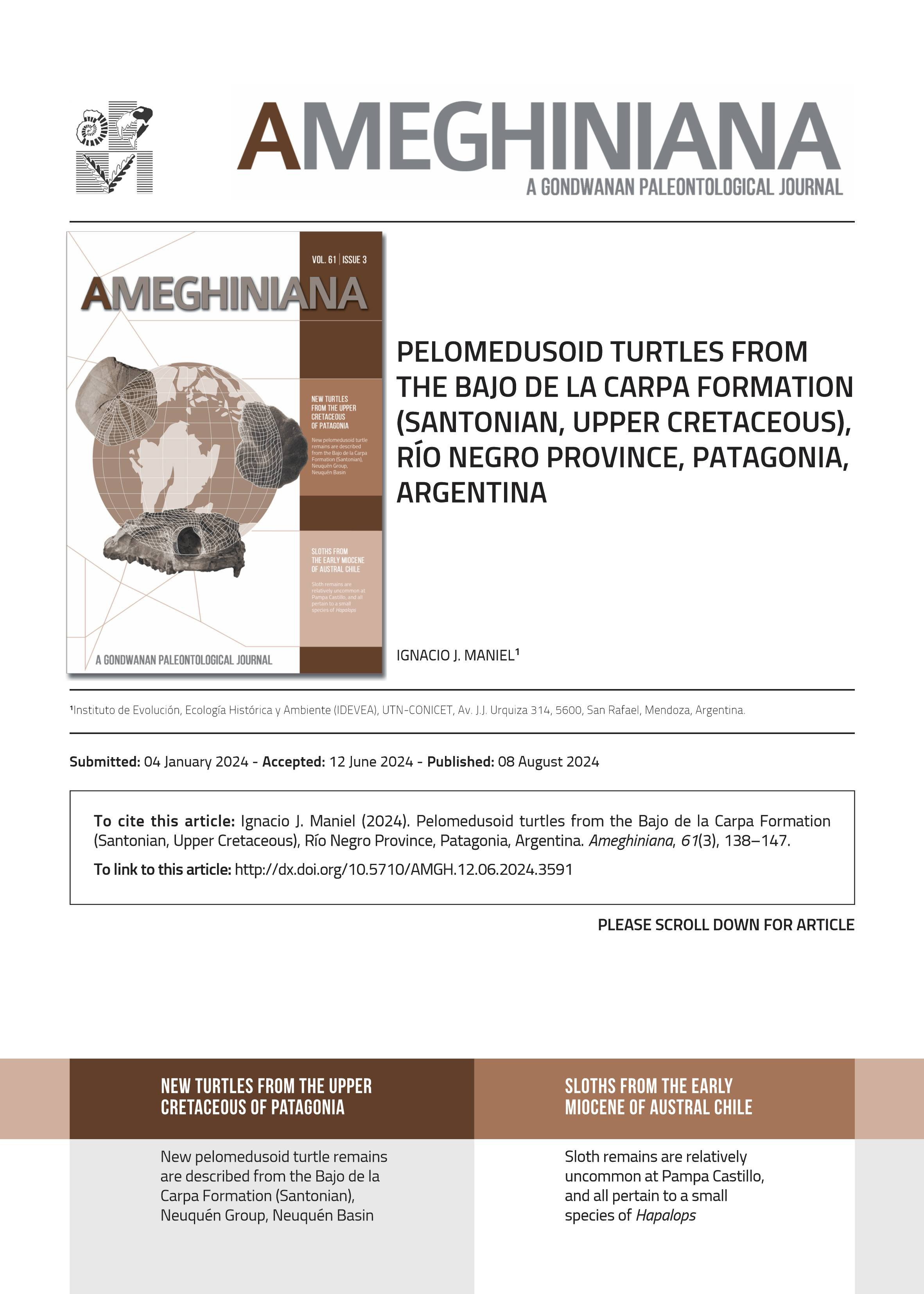PELOMEDUSOID TURTLES FROM THE BAJO DE LA CARPA FORMATION (SANTONIAN, UPPER CRETACEOUS), RÍO NEGRO PROVINCE, PATAGONIA, ARGENTINA
DOI:
https://doi.org/10.5710/AMGH.12.06.2024.3591Keywords:
Podocnemidoidea, Upper Cretaceous, Patagonia, Plastron variability, DiversityAbstract
The fossil record of pleurodiran turtles in the Cretaceous of Patagonia is diverse throughout all basins, with Pelomedusoides being
scarce compared to the Chelidae. In this article, new records of pelomedusoids are reported from the Bajo de la Carpa Formation (Santonian) at the La Bonita site, Río Negro Province, Argentina. Two specimens are described and referred to Podocnemidoidea by the combination of the following features: posterior marginals not extending over the costals, a straight xiphiplastron with rounded tips, short and U-shaped anterior lobe, a rhomboidal entoplastron, and a humeral-pectoral sulcus that crosses the entoplastron. The observed variability of the pelomedusoid plastron in the specimens recorded in the Neuquén Group shows that these new specimens present a new scute scheme. Evaluating the diversity observed in the Cretaceous pelomedusoids in the Neuquén Group, three stages of their evolution are defined. A first stage in the Cenomanian where the Bothremydidae appear, a second stage in the late Turonian–Coniacian interval where the Bothremydidae and Podocnemidoidea coexist, and a final stage in the Santonian–Campanian where only the Podocnemidoidea persist and increase the diversity and abundance of morphotypes.

Additional Files
Published
Issue
Section
License
Authors publishing in Ameghiniana have the option of making their article freely available online. Authors opting for the Open Access must pay a fee of $300 (US dollars) to cover article-processing costs and to ensure the article is made open access. Please contact the Production Team after the acceptance of your manuscript if you are interested in making your article Open Access. This option implies by default a license Creative Commons Attribution Non-Commercial-NoDerivs License (CC BY NC ND). If your funding institution requires a different licensing option please communicate this to the Production Team after the acceptance of your manusctipt.










